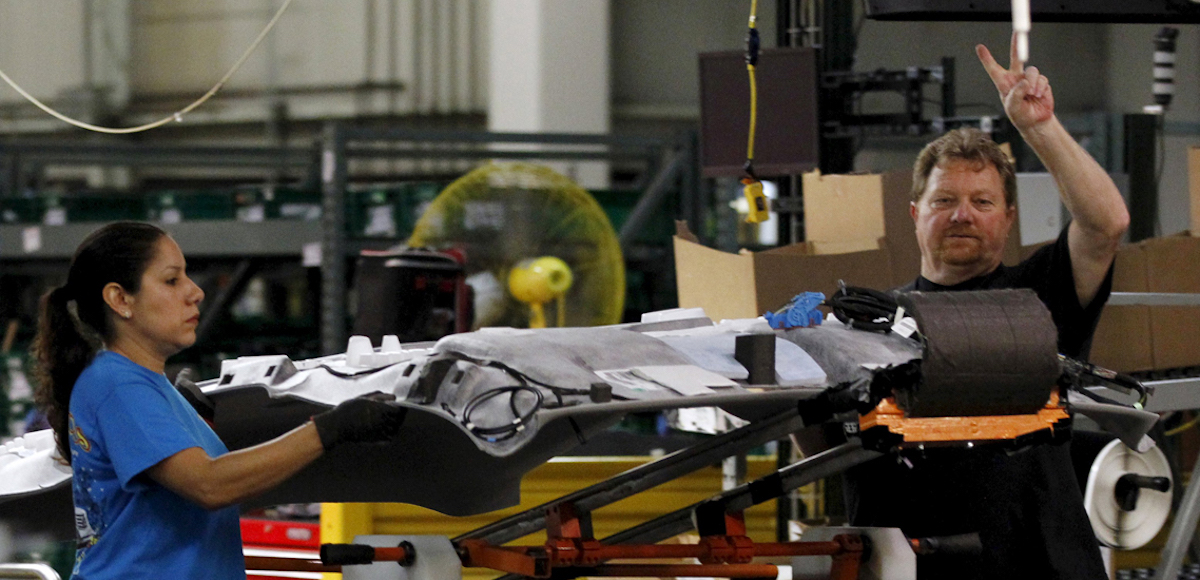

A International Union, United Automobile, Aerospace and Agricultural Implement Workers of America (UAW) worker gestures at the General Motors Assembly Plant in Arlington, Texas June 9, 2015. (Photo: Reuters)
The Texas Manufacturing Outlook Survey, the Dallas Federal Reserve gauge of regional factory activity, at 17.2 easily beat expectations for a 15.4 reading. This is the seventh straight month of significant strength for this index, which fell deeply into contraction following the 2014 collapse in oil prices.
In the regional manufacturing survey, firms are asked whether output, employment, orders, prices and other indicators increased, decreased or remained unchanged over the previous month.
Production posted a strong reading of 23.3, representing an increase of almost 9 points. Employment was also strong, hitting a 6-year high at 15.7 and 8.3 hours worked, indicating increased demand for employment in the future. Order readings were also solid. New orders came in at 18.1 and unfilled 8.1.
This all translates into stronger upward pressure on wages.
The Dallas Federal Reserve’s Texas Manufacturing Outlook Survey is only the latest in a string of solid regional reports showing serious strength in national factory activity. However, it has not yet translated into national readings and on Thursday we will have the new Institute for Supply Management (ISM) report of national activist.
The new jobs report is due out on Friday, which will give us more insight into added factory payrolls.
The Dallas Federal Reserve conducts the Texas Manufacturing Outlook Survey monthly to obtain a timely assessment of the state’s factory activity. Data were collected May 16–24, and 113 Texas manufacturers responded to the survey.
The most damning journalistic sin committed by the media during the era of Russia collusion…
The first ecological study finds mask mandates were not effective at slowing the spread of…
On "What Are the Odds?" Monday, Robert Barnes and Rich Baris note how big tech…
On "What Are the Odds?" Monday, Robert Barnes and Rich Baris discuss why America First…
Personal income fell $1,516.6 billion (7.1%) in February, roughly the consensus forecast, while consumer spending…
Research finds those previously infected by or vaccinated against SARS-CoV-2 are not at risk of…
This website uses cookies.